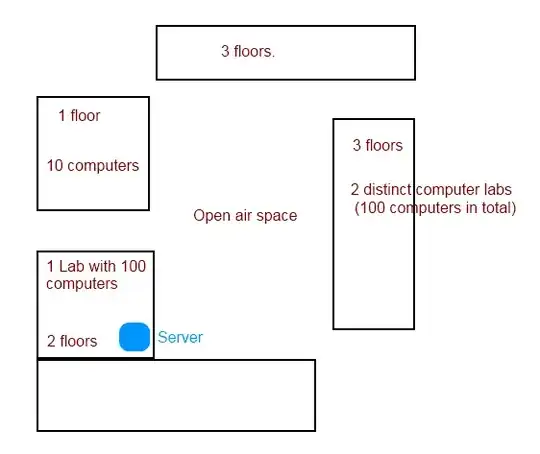I need some help in building a network between hundreds of computers spread across multiple buildings of my college. Yes, I'll be doing this as a part of my college project.
Please see this image, it will give you enough idea of what I'm trying to achieve.

All the computers in all buildings should be able to connect server.
Once network is up, there will be a set of services over intranet and network use will be moderate. Well, say there will be an email server and a http server. My point is, I cannot afford much of performance loss.
It feels easy to connect computers inside 1 building to each other, however, I'm clueless as to how to connect all of them to server. I mean, just 1 cable won't be enough to connect 1 building to server, right?
How should I go with it ? I am not expecting detailed configuration. Just heads up will do.